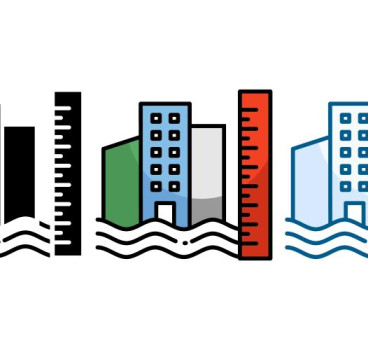The rise and rise of mushroom bricks
Mycelium, the intricate root network of mushrooms, is quietly making waves in the world of sustainable construction. Once relegated to the realms of decomposing leaves and woodland pathways, this ancient marvel is being harnessed to create sturdy, eco-friendly bricks with exceptional fire-resistant and insulating properties. There is still a long way to go but, enter the world of mushroom bricks - a potential game-changer in the future of building.
These innovative bricks are grown, not fired, unlike their traditional counterparts. Agricultural waste such as sawdust or straw is mixed with mycelium spores, forming a bio-composite that thrives in warm, humid environments. Within days, the mycelium binds the waste, knitting it into lightweight, yet surprisingly strong blocks. Their compressive strength can even surpass that of concrete, and their fire resistance exceeds 1,000°C – impressive credentials for any building material.
But the appeal of mushroom bricks extends far beyond their physical attributes. Their eco-friendly credentials are undeniable. Compared to traditional brick production, which emits significant carbon dioxide, growing mushroom bricks is a carbon-negative process. Additionally, these bio-bricks are biodegradable, returning to the earth at the end of their lifespan and completing a virtuous environmental cycle.
The potential applications of mushroom bricks are vast and exciting. Imagine eco-friendly homes working in harmony with nature, community gardens built from resilient mycelial walls, and even disaster shelters erected in a matter of days, thanks to the rapid growth of these fungal wonders. Architects and designers are dreaming of a future where buildings sprout from the ground, nurtured by the power of mycelium, rather than spewing carbon from industrial furnaces.
While challenges remain – scaling up production, ensuring long-term durability, and navigating building regulations, are key hurdles to overcome – the research in this field is accelerating. Forward-thinking companies are developing innovative techniques for cultivating and utilising mushroom bricks, paving the way for broader adoption.
One such example is the Fungi Farm at MoMA PS1 in New York, which was launched in September 2023. MoMA PS1 partnered with Ecovative Design to establish a public "Fungi Farm" within a museum. This interactive installation allows visitors to witness the growth of mycelium bricks firsthand, promoting awareness and engagement with this sustainable technology.
This has garnered international attention, following on from their innovative Hy-Fi structure, (pictured) a mushroom-brick pavilion, first built at MoMA PS1 in 2019. This iconic 12-foot-tall building, utilised over 10,000 mushroom bricks grown in just one week. Its success demonstrated the viability and beauty of bio-architecture.
Ecovative, founded in 2007, is a leader and pioneer in bio-materials development, specialising in mushroom-based packaging and building materials. Their signature "MycoFoam" technology has been used in products for Dell, Patagonia, and IKEA.
Another pioneer is Grown Bio, a Dutch company which focuses on producing sustainable building materials from mycelium, including insulation panels and roofing tiles. They're currently working on developing fire-resistant mycelium bricks for larger-scale construction projects.
The company was responsible for supplying materials for the vertical gardens in Amersterdam, built with mycelium brick modules. Their panels have also been installed in offices and public spaces. They offer green aesthetics, air purification, and a glimpse into the possibilities of bio-integrated design.
In Australia, the Zero Waste Mushrooms company uses recycled agricultural waste and mycelium to create packaging materials and insulation panels. Their mission is to close the loop on waste while promoting sustainable practices. Their production diverts waste from landfills and showcases the adaptability of mushroom bricks to different applications.
The rise of mushroom bricks and similar building products, is not just a novel sustainable option - it represents a paradigm shift in our approach to construction. It signifies a move away from resource-intensive, environmentally damaging practices and towards a regenerative, bio-inspired future. As we increasingly seek harmony with the natural world, the humble mushroom presents a remarkable gift – a building material that grows with, respects and ultimately returns to the very environment it helps shape.
The future of building might not be made of steel and concrete, but rather from the intricate threads of fungal ingenuity. And as we witness the rise of mushroom bricks, we are reminded that sometimes, the most revolutionary solutions might just be sprouting beneath our feet.
Sources:
- Ecovative (https://www.ecovative.com/pages/mycocomposite)
- Columbia Magazine (https://magazine.columbia.edu/article/magic-building-mushrooms)
- The Guardian (https://www.theguardian.com/environment/2020/jan/11/could-mushrooms-and-orange-peel-detoxify-the-building-industry)
- Massachusetts Institute of Technology (https://www.media.mit.edu/articles/these-mushroom-bricks-are-up-to-twice-as-strong-as-concrete/)
Additional Blogs

When fire breaks out who really knows the system
The story that caught my attention recently wasn’t about fire growth or building loss, it was about confusion. Specifically, the confusion faced by the fire service when arriving at buildings...
Read moreThe design and development of Nexus Layouts
When Zentia set out to rethink the suspended ceiling, the brief was clear: deliver greater creative freedom for designers, more distinctive visual identity for clients, and a solution that could keep...
Read more

The 100-year construction project or why longevity Is the new sustainability
For decades, the construction sector has defined sustainability through metrics such as operational energy, embodied carbon, material efficiency and circularity. These measures remain vital, but a...
Read more